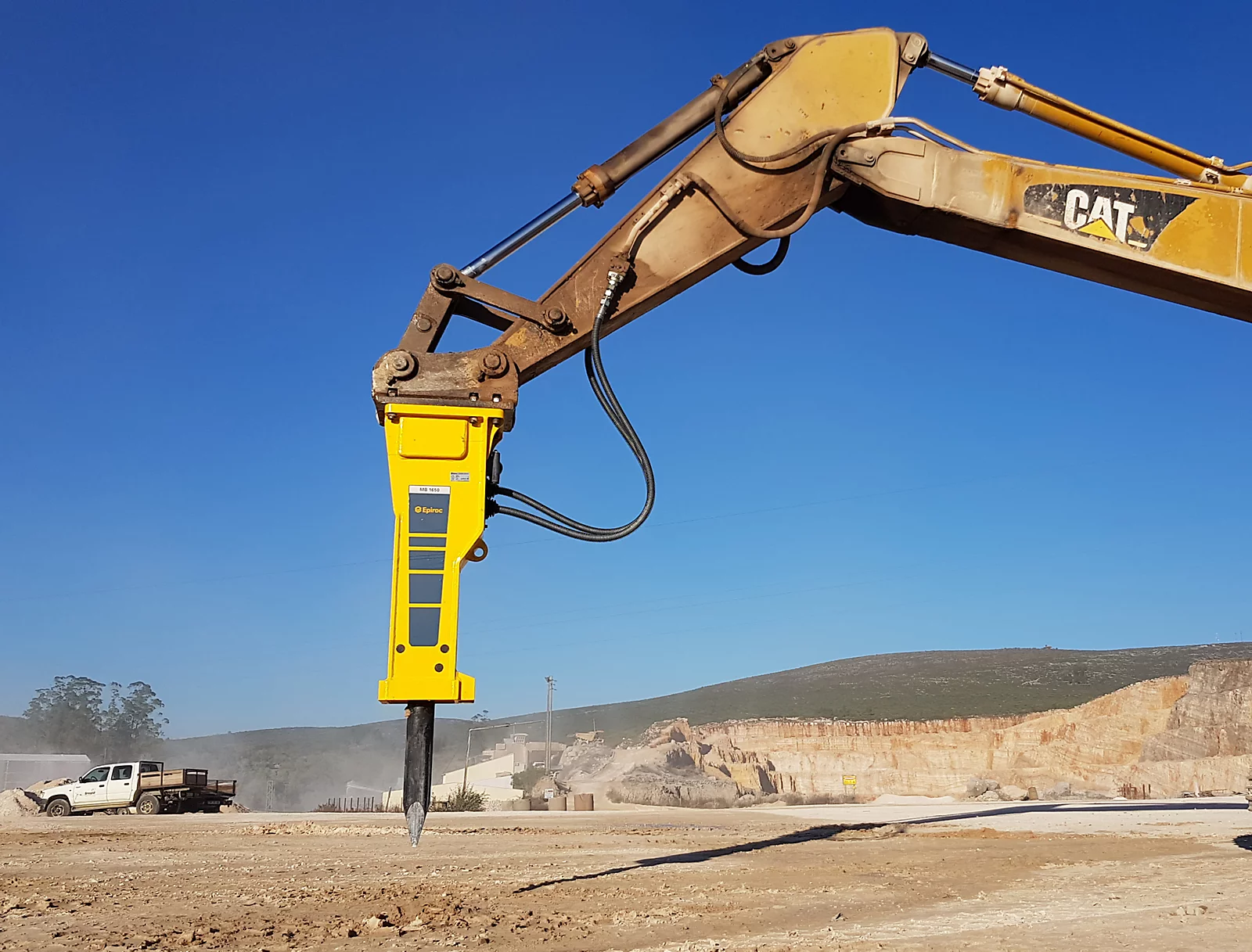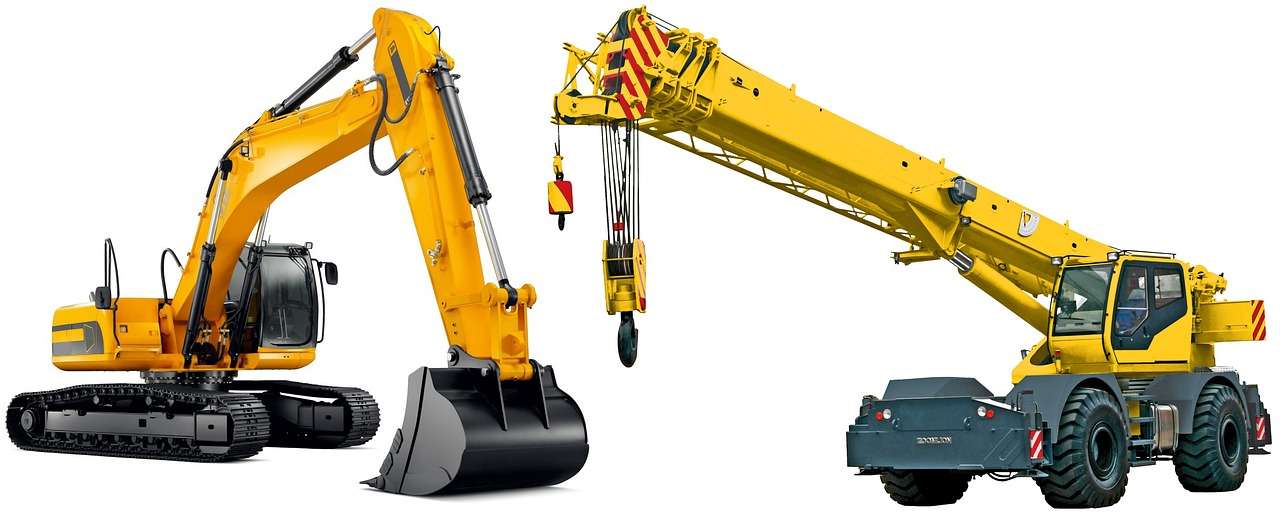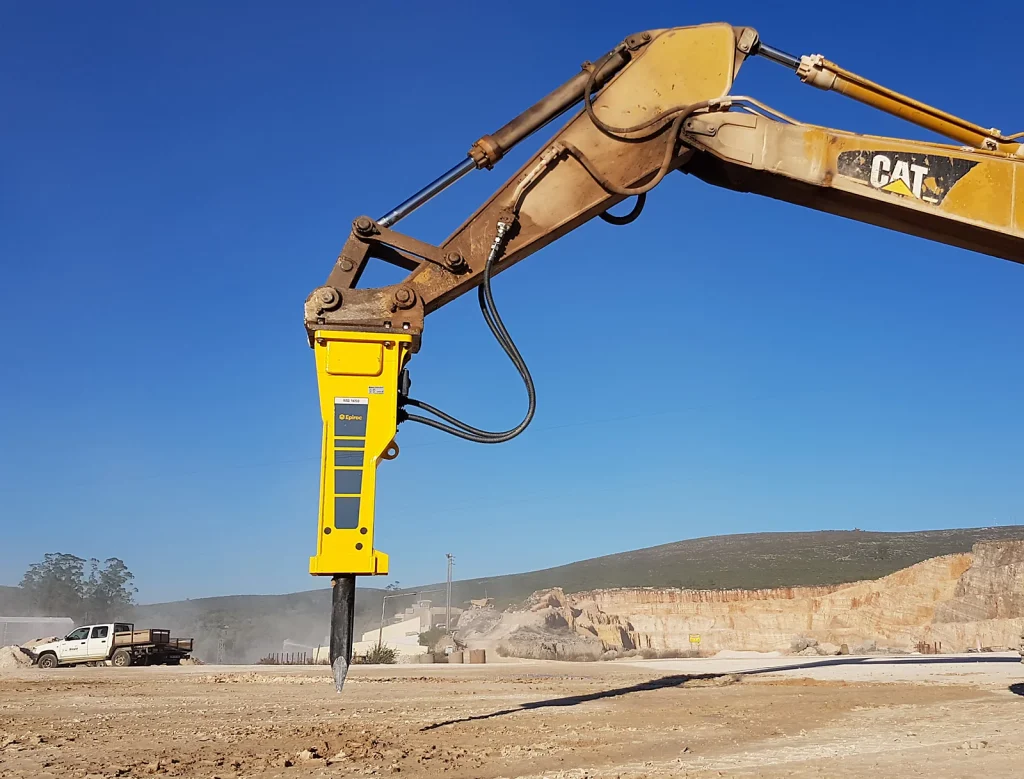When tackling heavy-duty construction tasks, choosing the right excavator breaker can make all the difference. Models like the Atlas Copco MB 1650, Montabert V65, and Rammer Excellence Line stand out for their exceptional power and durability. These breakers handle demanding jobs with ease and work seamlessly with various excavators. Selecting the right breaker ensures you achieve maximum efficiency while keeping costs under control. By focusing on your specific job requirements, you can find a breaker that delivers reliable performance and long-term value.
Key Takeaways
Choose an excavator breaker based on power and impact energy to efficiently handle tough materials like concrete and rock.
Evaluate the durability and build quality of breakers to ensure they withstand harsh construction environments and reduce maintenance needs.
Ensure compatibility between the breaker and excavator size to maximize performance and prevent mechanical issues.
Consider fuel efficiency and operational costs when selecting a breaker to lower overall expenses and enhance return on investment.
Focus on long-term value rather than just upfront costs; a higher-quality breaker can save money through reduced repairs and replacements.
Regular maintenance, including inspections and proper lubrication, is essential for extending the lifespan and efficiency of your excavator breaker.
Explore financing or leasing options if upfront costs are a concern, allowing access to high-quality equipment without significant initial investment.
Key Features to Look for in a Heavy-Duty Excavator Breaker
Power and Impact Energy
Why power is critical for breaking tough materials.
Power plays a vital role when you need to break through tough materials like concrete or rock. A powerful excavator breaker ensures that the job gets done faster and with less effort. Without sufficient power, you may struggle to penetrate dense surfaces, leading to delays and increased wear on your equipment. Selecting a breaker with high power output allows you to handle demanding tasks efficiently, saving both time and resources.
How to evaluate impact energy ratings.
Impact energy ratings help you measure the force delivered by the breaker during operation. Higher ratings indicate greater breaking capacity, which is essential for heavy-duty jobs. When evaluating impact energy, check the specifications provided by the manufacturer. Compare these ratings to the requirements of your project. This ensures that the breaker you choose can handle the workload without compromising performance.
Durability and Build Quality
Materials and construction that ensure longevity.
The materials used in an excavator breaker determine its durability. High-quality steel and reinforced components withstand the stress of heavy use. Look for breakers designed with advanced manufacturing techniques that enhance their structural integrity. A well-built breaker lasts longer and reduces the need for frequent repairs or replacements.
Resistance to wear and tear in demanding environments.
Heavy-duty construction sites expose equipment to harsh conditions. Dust, debris, and constant impact can wear down poorly made breakers. Choose a breaker with features like wear-resistant plating and robust seals. These elements protect the internal components and maintain performance even in the toughest environments.
Compatibility with Excavators
Matching breaker size to excavator size.
Proper sizing is crucial for optimal performance. A breaker that is too large or too small for your excavator can lead to inefficiency and potential damage. Check the weight and size recommendations provided by the manufacturer. Ensure that the breaker matches your excavator’s specifications to achieve balanced operation and safety.
Hydraulic system requirements and considerations.
Excavator breakers rely on hydraulic systems for power. Before purchasing, confirm that your excavator’s hydraulic system meets the breaker’s requirements. Factors like flow rate and pressure compatibility are critical. An incompatible system can reduce efficiency or cause mechanical issues. Always verify these details to avoid operational setbacks.
Efficiency and Cost-Effectiveness
Fuel efficiency and operational costs.
Fuel efficiency plays a significant role in reducing the overall expenses of operating an excavator breaker. A fuel-efficient breaker consumes less energy during operation, which directly lowers your fuel costs. When evaluating a breaker, check its energy consumption rate. Models designed with advanced hydraulic systems often deliver better fuel efficiency. These systems optimize power usage, ensuring that no energy goes to waste.
Operational costs extend beyond fuel. Maintenance, repairs, and downtime also contribute to your expenses. Choosing a reliable breaker with minimal maintenance needs can save you money in the long run. Look for features like wear-resistant components and self-lubricating systems. These reduce the frequency of repairs and keep your equipment running smoothly. By prioritizing fuel efficiency and low operational costs, you can maximize your return on investment.
Balancing upfront cost with long-term value.
The upfront cost of an excavator breaker might seem high, but focusing solely on the price can lead to poor decisions. Instead, consider the long-term value the breaker provides. A high-quality breaker may cost more initially, but it often lasts longer and performs better. This reduces the need for frequent replacements and repairs, saving you money over time.
To assess long-term value, evaluate the breaker’s durability, efficiency, and compatibility with your excavator. Durable models withstand heavy use and harsh conditions, ensuring consistent performance. Efficient breakers lower operational costs, while compatible ones prevent unnecessary wear on your equipment. Investing in a breaker that balances these factors ensures you get the best value for your money.
“The bitterness of poor quality remains long after the sweetness of low price is forgotten.” This quote highlights the importance of prioritizing quality and value over cost alone.
By carefully analyzing both upfront costs and long-term benefits, you can make an informed decision that supports your project’s success.
Top Excavator Breakers for Heavy-Duty Construction
Atlas Copco MB 1650
Key features and specifications.

The Atlas Copco MB 1650 stands out as a reliable choice for heavy-duty tasks. It delivers an impressive impact energy of 2,700 joules, making it suitable for breaking through tough materials like reinforced concrete and hard rock. Its robust design includes wear-resistant steel components, ensuring durability in demanding environments. The breaker weighs approximately 3,600 pounds, which makes it compatible with excavators in the 19-32 ton range. Additionally, it features a noise-dampening system, reducing sound levels during operation.
Pros, cons, and ideal use cases.
Pros:
High impact energy for efficient material breaking.
Durable construction for extended lifespan.
Noise-dampening system enhances operator comfort.
Cons:
Heavier weight may limit compatibility with smaller excavators.
Higher upfront cost compared to some alternatives.
Ideal Use Cases: The Atlas Copco MB 1650 excels in demolition projects, quarrying, and large-scale construction tasks. If you need a breaker for high-impact jobs requiring consistent performance, this model is a strong contender.
Montabert V65
Key features and specifications.
The Montabert V65 offers a combination of power and precision. It provides an impact energy of up to 15,000 joules, making it one of the most powerful options in its class. Its advanced hydraulic system ensures smooth operation and reduces energy loss. The breaker weighs around 5,400 pounds, designed for excavators in the 35-60 ton range. It also includes an automatic lubrication system, which minimizes maintenance needs and extends the life of its components.
Pros, cons, and ideal use cases.
Pros:
Exceptional impact energy for heavy-duty applications.
Automatic lubrication system reduces maintenance efforts.
Advanced hydraulics improve efficiency and performance.
Cons:
Requires a larger excavator for compatibility.
Higher operational costs due to its size and power.
Ideal Use Cases: The Montabert V65 is perfect for large-scale mining operations, heavy demolition, and infrastructure projects. If your work involves breaking through extremely dense materials, this breaker delivers unmatched power and reliability.
Rammer Excellence Line
Key features and specifications.
The Rammer Excellence Line combines innovation with performance. These breakers feature a Constant Blow Energy system, ensuring consistent impact force regardless of hydraulic flow changes. They are available in various models, with impact energy ranging from 1,500 to 12,000 joules. The breakers are built with wear-resistant materials and include a vibration-dampening system to reduce operator fatigue. Their compatibility spans excavators from 10 to 70 tons, depending on the specific model.
Pros, cons, and ideal use cases.
Pros:
Consistent impact energy for reliable performance.
Wide range of models to suit different excavator sizes.
Vibration-dampening system enhances operator comfort.
Cons:
Performance may vary depending on the chosen model.
Some models may require additional hydraulic adjustments.
Ideal Use Cases: The Rammer Excellence Line is versatile, making it suitable for medium to large-scale construction, roadwork, and demolition projects. If you need a breaker that adapts to various tasks and excavator sizes, this line offers flexibility and efficiency.
Honorable Mentions
When exploring reliable excavator breakers, a few additional models deserve your attention. These options may not have made the top three, but they still deliver excellent performance and value for specific applications.

CAT H120GC
The CAT H120GC offers a balance of efficiency and durability. Designed for medium-sized excavators, this breaker provides consistent performance for general construction and light demolition tasks. Its simplified design reduces maintenance needs, making it a cost-effective choice for operators who prioritize ease of use. The H120GC also features an energy recovery system that enhances impact power while minimizing fuel consumption. This model works well for projects requiring steady performance without excessive operational costs.
Key Highlights:
Energy recovery system for improved efficiency.
Low-maintenance design for reduced downtime.
Ideal for medium-duty applications.
Stanley MB10
The Stanley MB10 stands out for its versatility and robust construction. This breaker is compatible with a wide range of excavators, making it a flexible option for contractors handling diverse projects. It delivers high-impact energy, suitable for breaking through tough materials like concrete and asphalt. The MB10 also includes advanced noise-reduction technology, ensuring a quieter work environment. Its durable build ensures long-term reliability, even in demanding conditions.
Key Highlights:
High-impact energy for tough materials.
Noise-reduction technology for operator comfort.
Versatile compatibility with various excavators.
Both the CAT H120GC and Stanley MB10 provide dependable solutions for specific needs. Whether you prioritize efficiency, low maintenance, or versatility, these models offer features that can enhance your operations. By considering these honorable mentions, you expand your options and increase the likelihood of finding the perfect breaker for your projects.
How to Choose the Right Breaker for Your Needs
Assessing Your Job Requirements
Types of materials to be broken.
Understanding the materials you need to break is essential when selecting an excavator breaker. Different breakers are designed to handle specific materials, such as concrete, asphalt, or rock. For instance, if your project involves reinforced concrete, you will need a breaker with high impact energy to penetrate the dense material effectively. On the other hand, lighter materials like asphalt may require a breaker with moderate power to avoid unnecessary wear on the equipment. Always evaluate the primary material at your job site to ensure the breaker you choose matches the task.
Frequency and scale of use.
The frequency and scale of your operations also play a significant role in choosing the right breaker. For occasional use, a mid-range breaker with moderate durability may suffice. However, for large-scale or frequent projects, investing in a heavy-duty breaker with advanced features becomes crucial. High-frequency use demands a model that can withstand continuous operation without overheating or breaking down. Consider how often you will use the breaker and the size of the projects to determine the durability and performance level required.
Matching Breaker Size to Excavator Size
Importance of proper sizing for performance and safety.
Choosing the correct breaker size for your excavator ensures optimal performance and safety. A breaker that is too large can strain your excavator’s hydraulic system, leading to mechanical issues. Conversely, a breaker that is too small may not deliver the power needed for the job, resulting in inefficiency. Proper sizing allows the breaker and excavator to work in harmony, maximizing productivity while minimizing wear and tear. Always consult the manufacturer’s guidelines to match the breaker size to your excavator’s specifications.
How to calculate compatibility.
To calculate compatibility, start by checking your excavator’s weight and hydraulic capacity. Most manufacturers provide a recommended weight range for their breakers. Ensure your excavator falls within this range. Next, verify the hydraulic flow and pressure requirements of the breaker. Compare these values with your excavator’s hydraulic system to confirm they align. If the specifications do not match, the breaker may underperform or cause damage to your equipment. Accurate calculations prevent costly mistakes and ensure smooth operation.
Budget Considerations
Evaluating upfront costs vs. long-term savings.
When evaluating an excavator breaker, consider both the upfront cost and the long-term savings it offers. A lower-priced breaker might seem appealing initially, but it could lead to higher maintenance and repair costs over time. High-quality breakers often come with a higher price tag but deliver better durability and efficiency. These features reduce downtime and extend the equipment’s lifespan, saving you money in the long run. Focus on the total cost of ownership rather than just the initial expense to make a financially sound decision.
Financing and leasing options for heavy-duty equipment.
If purchasing a breaker outright strains your budget, explore financing or leasing options. Many equipment suppliers offer flexible payment plans that allow you to spread the cost over time. Leasing provides another alternative, especially for short-term projects or businesses with limited capital. It enables you to access high-quality equipment without a significant upfront investment. Review the terms and conditions carefully to ensure the option you choose aligns with your financial goals and operational needs.
Maintenance Tips for Heavy-Duty Breakers
Regular Inspection and Cleaning
Identifying wear and tear early.
Regular inspections help you detect potential issues before they escalate. Examine the breaker for cracks, dents, or unusual wear on critical components like the chisel or housing. Pay close attention to bolts and fasteners, as loose or damaged ones can compromise safety and performance. Early identification of wear and tear allows you to address problems promptly, reducing downtime and repair costs.
Cleaning to prevent debris buildup.
Construction sites expose breakers to dust, dirt, and debris. Cleaning your equipment after each use prevents buildup that can hinder performance. Use a soft brush or compressed air to remove debris from crevices and moving parts. Avoid using high-pressure water directly on sensitive areas, as it may damage seals or internal components. Keeping the breaker clean ensures smooth operation and extends its lifespan.
Lubrication and Hydraulic System Care
Importance of proper lubrication for moving parts.
Lubrication minimizes friction between moving parts, reducing wear and ensuring efficient operation. Apply the recommended grease to areas like the chisel and bushings at regular intervals. Over-lubrication can attract dirt, so follow the manufacturer’s guidelines for the correct amount. Proper lubrication not only enhances performance but also prevents costly repairs caused by excessive friction.
Maintaining hydraulic pressure and fluid levels.
Hydraulic systems power your breaker, making their maintenance essential. Check the hydraulic fluid levels frequently to ensure they meet the manufacturer’s specifications. Low fluid levels can lead to overheating and reduced efficiency. Inspect hoses and connections for leaks or damage that might affect pressure. Maintaining optimal hydraulic pressure and fluid levels keeps your breaker operating at peak performance.
Storage and Handling Best Practices
Protecting the breaker during downtime.
Proper storage safeguards your breaker when it’s not in use. Store the equipment in a dry, covered area to protect it from moisture and rust. Use protective covers to shield sensitive parts from dust and debris. If you plan to store the breaker for an extended period, apply a rust inhibitor to exposed metal surfaces. These precautions preserve the breaker’s condition and readiness for future use.
Safe transportation and storage tips.
Transporting heavy-duty breakers requires careful handling to prevent damage. Secure the breaker firmly to avoid movement during transit. Use padded supports or straps to protect it from impacts. When storing, place the breaker on a stable surface to prevent tipping or falling. Following these practices ensures the breaker remains in excellent condition, ready for your next project.
Choosing the right excavator breaker can transform your heavy-duty tasks. Models like the Atlas Copco MB 1650, Montabert V65, and Rammer Excellence Line deliver exceptional performance and reliability. Always evaluate your job requirements, ensure compatibility with your excavator, and align your choice with your budget. Proper maintenance keeps your equipment efficient and extends its lifespan. Take the time to explore your options and make an informed decision. The right breaker ensures success in your projects and maximizes your investment. If you need any excavator parts, feel free to contact the professional excavator parts supplier – YNF Machinery.





